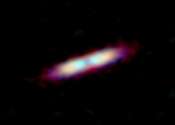First exposed planetary core discovered allows glimpse inside other worlds
The surviving core of a gas giant has been discovered orbiting a distant star by University of Warwick astronomers, offering an unprecedented glimpse into the interior of a planet.









